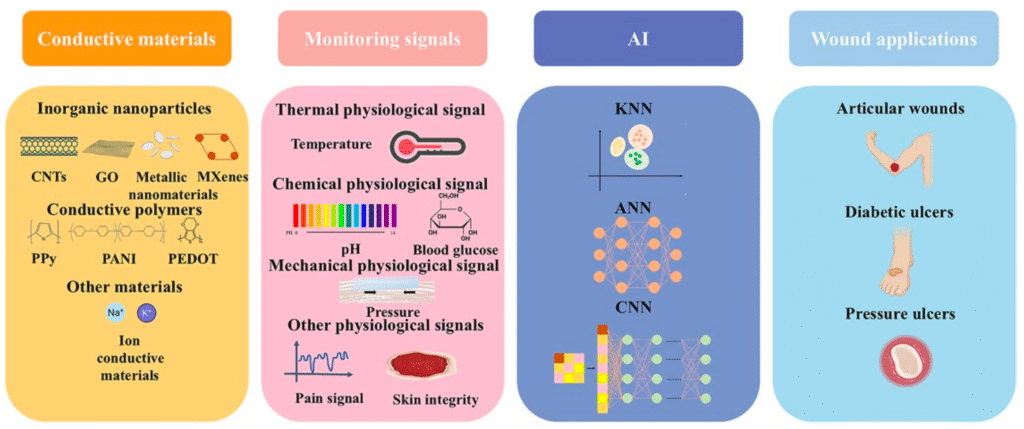A new review from researchers in China highlights a promising approach to treating chronic wounds using intelligent hydrogel dressings that combine conductive materials with artificial intelligence. These dressings are designed to monitor wound conditions in real time while actively promoting healing, offering a potential breakthrough for patients with diabetic ulcers, pressure sores, and joint-related injuries.
The technology centers on conductive hydrogels—soft, flexible materials that can sense physiological signals such as temperature, pH, glucose levels, pressure, and even pain indicators. These signals are collected continuously and noninvasively, giving clinicians and caregivers a dynamic view of the wound’s status without needing to remove the dressing.
What sets this approach apart is its integration with machine learning algorithms. Models such as convolutional neural networks (CNN), k-nearest neighbors (KNN), and artificial neural networks (ANN) are used to analyze sensor data and predict healing progress, detect infections early, and guide treatment decisions. In some cases, prediction accuracy has reached up to 96 percent, making this system a powerful tool for personalized wound care.
Beyond monitoring, the dressings also support healing through electroactive stimulation, antibacterial properties, and controlled drug release. The review details a range of conductive materials used to enhance these functions, including carbon nanotubes, graphene, MXenes, and conductive polymers. These materials improve biocompatibility, sensitivity, and long-term stability.
The system’s signal output can be tailored to different wound types using methods such as color changes, resistance shifts, and infrared imaging. This multimodal approach allows for flexible adaptation across various clinical scenarios, including home care and remote monitoring.
Despite the promise, several challenges remain. Material degradation, signal consistency, and the generalizability of AI models across diverse patient populations are ongoing concerns. Researchers are working to improve signal fusion techniques, refine algorithms, and develop protocols for clinical translation.
This review positions AI-assisted hydrogel dressings as a next-generation solution for wound care, merging smart materials with smart algorithms. The goal is to reduce healing time, prevent complications, and improve quality of life for millions of patients living with chronic wounds.

